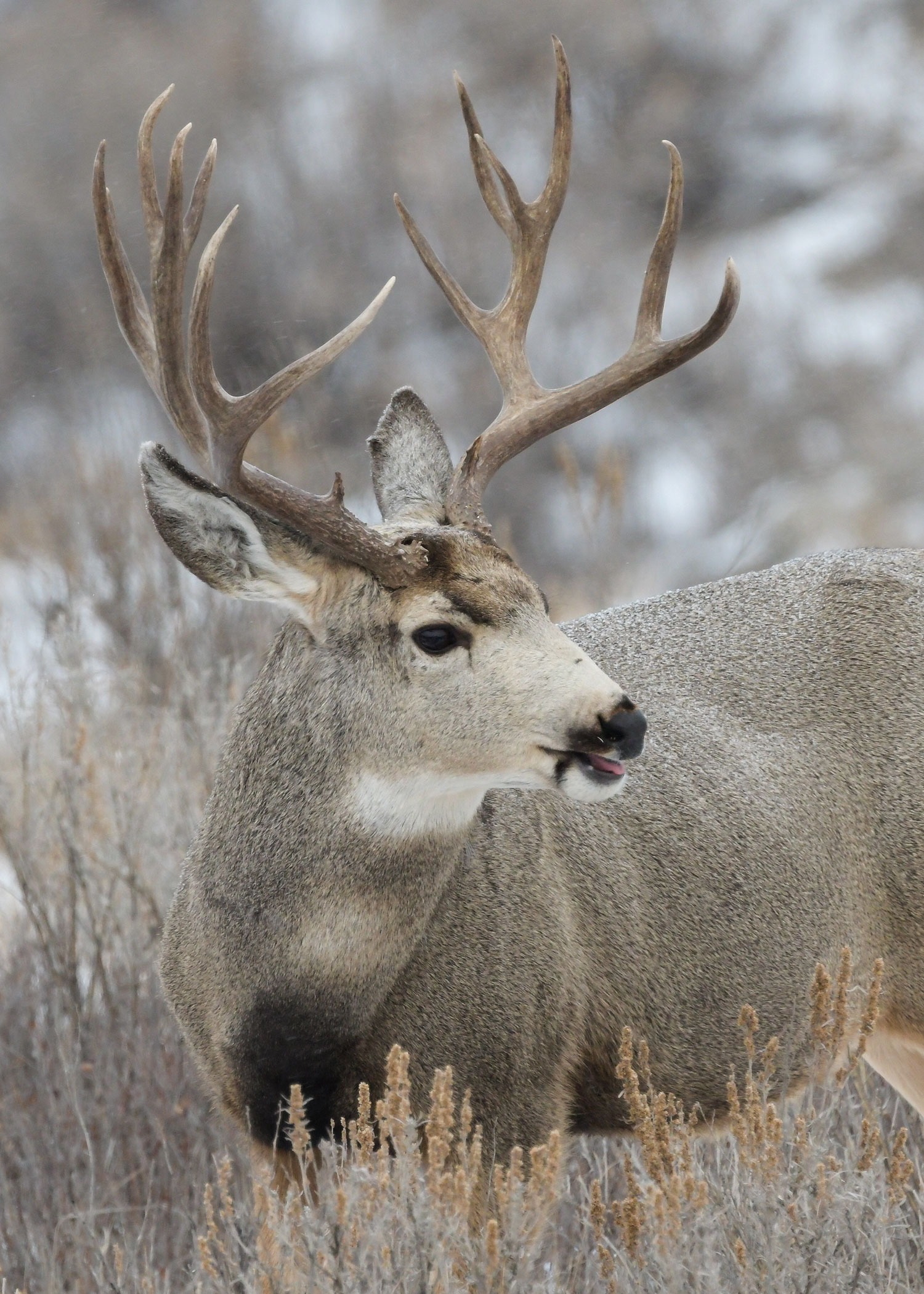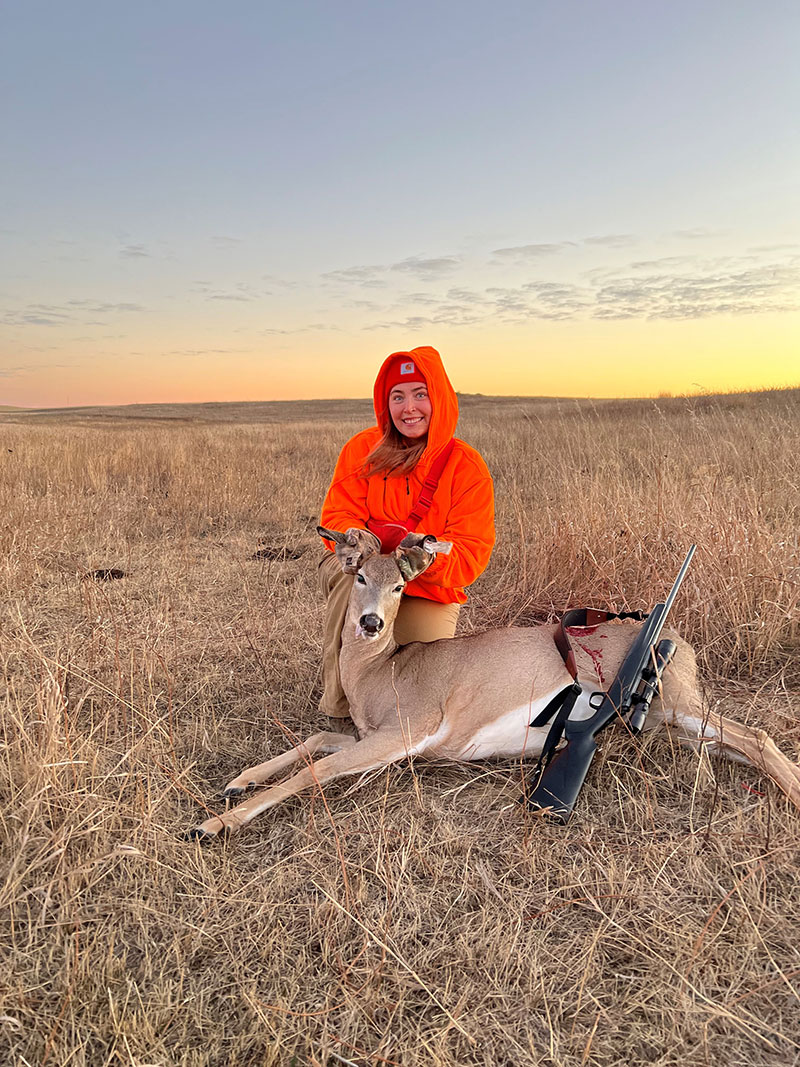Kind of a Big Deal - Q and A
Ron Wilson

When you consider the state’s first modern deer season was in 1931, the first year a specific license was required to hunt, that means we’ve been hunting deer in North Dakota for more than 90 years.
That’s a long time. There’s a lot of history attached to those nine-plus decades. And, understandably, many things — habitat conditions, deer numbers and the fallout from whatever Mother Nature throws our way — have changed over time.
Prior to the 2023 deer gun opener, NDO staff visited with Casey Anderson, North Dakota Game and Fish Department wildlife division chief, about the most anticipated hunting season no matter the year, deer numbers across the state, the influence of a tough winter on our most coveted big game species, the list goes on.
NDO: Game and Fish made available 53,400 licenses for the 2023 deer gun season. That’s the lowest allocation since 2016. Even so, more than 75,000 hunters still applied. What does that tell you?
Anderson: Deer hunting in North Dakota is, as some people would say, kind of a big deal.
There are whole families, extended families that like to try to get out and deer hunt for that short period of time in the fall.
Considering we’re a very agricultural state, you've got a lot of folks who are working hard to get crops off, get hay hauled in, and it seems like deer season is right about the time that some of that stuff really slows down and they have an opportunity to get together with family.
And so, deer hunting gets to be something that a lot of folks look forward to in North Dakota.
Unfortunately, the last few years our deer population has been trending down.
And really a lot of that has to do with habitat loss and the types of habitats that are out there.
We came out of an unprecedented winter that we haven't seen in quite some time and it really hurt the deer herd that was already in a downward trend because of, again, habitat loss and other things like epizootic hemorrhagic disease that we had on the landscape that set some of the whitetails back.
NDO: Why a reduction of nearly 11,000 deer gun licenses from 2022? How did we get here?
Anderson: Again, we're coming out of a terrible winter that was worse in some parts of the state than others, but no matter what it was like where you live, winter was bad enough to still put stress on the critters out there.
Not only did we lose a lot of deer in certain areas of the state, but the tough winter also affected the ability for deer to bring off fawns, at least twins.
The license allocation goal that we put out was to hopefully be a little more conservative and allow the deer to maybe have a decent year.
We’re crossing our fingers that we have a decent winter and then fawn production should start kicking back in.
We were also a little bit behind in some areas because of the EHD outbreak on whitetails especially, so we were pretty conservative with licenses this year just to try to help those populations rebound.
But we still want the opportunity for folks to go out and enjoy some deer hunting.
NDO: From 2001 to 2011, Game and Fish made available more than 100,000 deer gun licenses to hunters.
Some hunters were carrying several deer tags in their pockets during those years.
Will we ever see anything like that again in North Dakota? If so, what needs to be done to get there? If not, why can’t we foresee getting there?
Anderson: To get back to that type of situation, it's going to take a landscape shift in habitat.
When you think about it, we had more than 3 million acres of CRP on the landscape.
We had shelter belts, more old farmsteads with lots of trees on the landscape.
Some of that stuff has come off the landscape for multiple reasons, but when it was there, it was really a boon for deer and many other critters in North Dakota.
The other thing that all that habitat did back then was help deer and other animals rebound much faster than today after a tough winter.
To get back to that, I don't know that we would have to get back to those levels of habitat spread across the state, but we would definitely have to increase habitat in the state in key areas.
It's going to take a decision by some folks out there who are controlling a lot of the landscape to increase habitat that would help deer make it through bad winters, and to provide fawning habitat in spring in places so does can raise their fawns.
Those are the things that will really make them bounce back fast.
Now, of course, if we get easy winters, that's going to definitely help.
While easy winters can take us a long way, one bad winter can set things back quite a ways.
NDO: What about mule deer?
Anderson: Our big game biologists just got done flying yesterday (Oct. 16) and from the information I got from them, it looks like mule deer populations were kind of different across the badlands.
We had areas with really good fawn production and areas with pretty minimal fawn production.
So, we definitely saw the response from the bad winter we had.
It looked like the buck to doe ratio was in pretty good shape, pretty stable.
However, a lot of the bucks were a little bit on the younger side compared to other years.
But all in all, habitat conditions in the badlands are excellent after this year's rains and growing season.
Barring another bad winter, mule deer should have the opportunity to rebound fairly decently.
Overall, no matter if you’re hunting whitetails or mule deer, hunters can expect to work a little bit harder to find deer.
We’ve had a pretty nice fall and things are looking good as far as crops being off, so deer will be in a lot fewer places as far as hiding situations.
I think if people want to put the work in, they'll be able to find a deer to harvest.
Just depends on which deer you want to harvest.

Deer Licenses by the Numbers
A look at deer gun license numbers over time.
The state’s first deer season was held in 1931, the first year a specific deer license was required.
- 1971 – The first year more than 50,000 deer licenses were made available to hunters. More than 33,000 deer were harvested that season.
- 1974 – The first year more than 60,000 deer licenses were made available to hunters. Yet, from 1975-81, deer license totals were below 50,000.
- 1986-87 – More than 80,000 deer licenses were made available to hunters those two seasons. Yet, in 1988, the total fell to about 64,000.
- 2001-11 – More than 100,000 deer licenses were made available to hunters during those 11 seasons. The high was 149,400 in 2008.
- 2012 – Nearly 45,000 fewer deer licenses were made available compared to 2011.
- 2015 – The lowest number of licenses (43,275) made available to hunters in 35 years.
- 2016-19 – Deer licenses made available to hunters have increased (from 49,000 in 2016 to 65,000 in 2019) in each of those four hunting seasons.
- 2021 – More than 72,000 licenses were made available to hunters, making it the highest number of licenses available in more than a decade.
- 2023 – More than 53,000 deer licenses were made available to hunters this year. The last time there were fewer than this was 2016.

